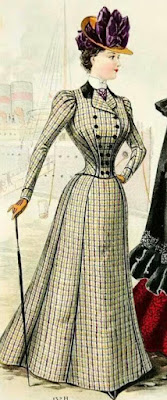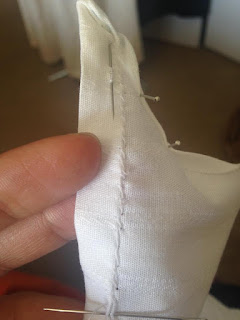Back in early September, I was invited to the New York Historical Society to participate in their first interpretation program called "Black New York". This experiment was to shed light on the untold stories of the free black population of New York City during the times of the American Revolution and the mid-17th & 18th centuries.

Since I am a Maryland native and have predominate knowledge about black history in the southern states, I will be very honest with you in saying that I know little about black New York history other than the Harlem Renaissance in the 1920's-30's and during the time of the American Revolution, New York's population of enslaved people was larger than the small percentage of people who were free. This was because abolitionism did not come into effect until the turn of the 19th century (which would later make New York a
free State). Members of the free community contributed to New York not only in ways of having thriving businesses and earning a living, but also in times of conflict they took up arms and joined either Washington's Army to defend their colony, or joined the British Army to ensure they stay free (I'll explain about that in a bit)...With that being said, I had a lot of new information to learn in preparation for the weekend; thankfully I had a lot of help from Cheyney McKnight from "Not Your Mama's History" in providing the resources.


After the program we took a trip down to Fraunces Tavern on Pearl Street in the historic Manhattan area. The tavern was established around 1762 by Samuel Fraunces who purchased the 4 story house from the prestigious Delancey family and turned it into tavern, originally calling it "The Queen's Head". Later, the tavern was used as one of the meeting places for the Sons of Liberty and eventually became General Washington's headquarters during the American Revolution. In the case of black history, the tavern was most well known for the evacuation of black loyalists who fled New York with the British in 1783 to territories such as Nova Scotia, and Sierra Leone (a country England formed for free blacks), the West Indies and London.
Once arrived, newly freed African-Americans would take their names down on what was known as the
Book of Negros (a written database created by Samuel Birch, which identified 3,000 individual by name and description). This book also helped deflect slave catchers from apprehending the wrong person who was not registered in the book. This was due to the British-American Board of Inquiries meetings that were held prior to the evacuation date, in which negotiations were established between England and the United States to ensure that no American "property" (former slaves who were emancipated by the British during the war) were to leave with the British troops. From April to November, freed slaves of New York (and more than likely of other colonies as well) were interviewed every week to prove and secure their loyalty to the Crown. Those who were registered in the book were able to leave. Those who did not make it, were captured and re-enslaved.
 |
Fraunces Tavern on Pearl Street
|
New York City is chalk full of history, no matter where you go! Seriously, every street has a story. This metropolis is the literal "melting pot" of America, beginning with the first interactions between Native Americans and the Dutch, to immigrants taking their first steps on Ellis Island. New York has seen and participated in every war known to US history, and has experienced the changes and growing pains that you'd expect in its expansion from being a small town along the Hudson River to a skyscraper city with over a million residents and visitors every day. With that in mind, being part of this program was a huge honor in paying homage to a small part of history that isn't really talked about in history books. It was an honor representing the free black community in New York and being able to tell their stories.
Without further ado, here's more photos of Cheyney McKnight, Joel Cook, and myself checking out the subway and wandering around the Big Apple in 18th century style.
 |
| Was one of the longest train rides underground (DC Metro, eat your heart out!) |
 |
| Such a cool mural on the Subway wall |
 |
| 17th Century Dutch Architecture is still very present here |
 |
| Central Park |
 |
| "Imagine" Memorial Mosaic for John Lennon of the Beatles |













.jpg)


Comments
Post a Comment